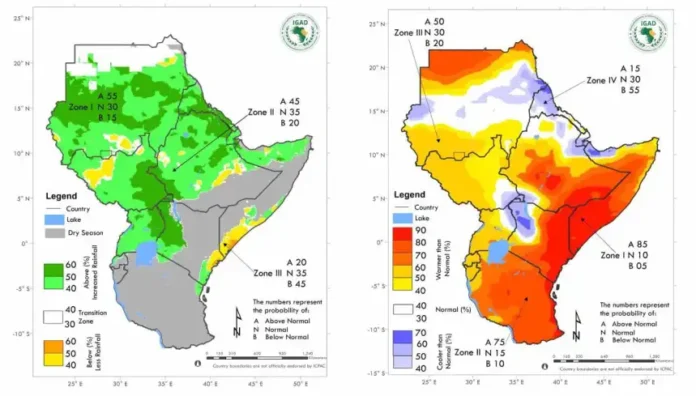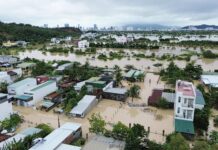Climate scientists are forecasting a season of above-average rainfall across much of the Greater Horn of Africa during the June to September (JJAS) season, raising both hopes and concerns for communities in the region.
According to the latest seasonal outlook released at the 70th Greater Horn of Africa Climate Outlook Forum (GHACOF 70), the IGAD Climate Prediction and Applications Center (ICPAC) predicts an increased likelihood, up to 55%, of above-normal rainfall over key areas including central Sudan, eastern South Sudan, parts of southwestern and northern Ethiopia, western Kenya, and eastern Uganda.
A broader forecast indicates a 45% probability of wetter-than-average conditions in regions such as central to western Uganda, South Sudan, southern Sudan, Djibouti, and western Eritrea. However, not all areas will benefit. Coastal regions of Somalia and Kenya, as well as parts of northwestern South Sudan and southeastern Ethiopia, are expected to experience below-normal rainfall.
The forecast also signals warmer than normal surface temperatures across much of the region, with heightened probabilities over northern and southern Sudan, central and southern Ethiopia, Somalia, and large swathes of Kenya, Rwanda, Burundi, and Tanzania.
While the anticipated rains may improve pasture and water availability, reducing pastoralist mobility and the associated conflicts, experts are sounding the alarm on several fronts. Increased rainfall is expected to heighten the risk of flooding, infrastructure damage, and outbreaks of human and animal diseases, as conditions favor the proliferation of disease vectors.
Sector leaders have urged member states to initiate contingency measures to mitigate these risks, including the potential for increased displacement and a rise in sexual and gender-based violence (SGBV) during emergencies.
“The Greater Horn of Africa is facing unprecedented climate extremes, from droughts to floods,” warned IGAD Deputy Executive Secretary Mohamed Ware. “These events threaten our food systems, water resources, and livelihoods. We must institutionalize climate services and integrate climate risk into every decision.”
The eleven countries covered in the JJAS outlook include Burundi, Djibouti, Eritrea, Ethiopia, Kenya, Rwanda, Somalia, South Sudan, Sudan, Tanzania, and Uganda. The meeting emphasized the need for cross-border collaboration and early preparedness to navigate the dual impacts of enhanced rainfall, both its opportunities and its threats.
Written By Rodney Mbua



















